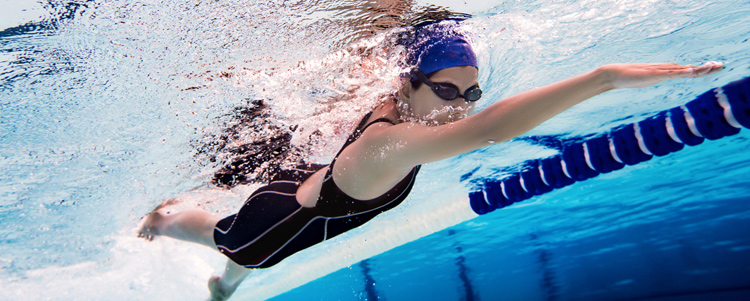Overuse Injuries in Adolescents

Why they are so prevalent and how you can prevent them
Overuse injuries are on the rise as youth become more and more involved in sports. These injuries typically occur when kids participate in year-round training, specialize in one sport and/or are involved in multiple sports where the primary emphasis is on the same body part. Examples of these sports include swimming and baseball or soccer and cross country.
Unfortunately, there are no scientifically determined guidelines to help determine the line between when exercise is healthy and when it becomes harmful and constitutes overtraining. It’s important for adolescents to be involved in physical activity at young ages because it correlates with them being more physically active later in life. However, we must caution against overtraining because of the prevalence of overuse injuries in adolescent athletes.
An overuse injury is microtraumatic damage to a bone, muscle or tendon that has been subjected to repetitive stress without sufficient time to heal or undergo the natural reparative process. The risk of overuse in adolescents is more widespread because the growing bones of young athletes cannot handle as much stress as the mature bones of adults.
The number of these injuries in youth has paralleled the growth of youth participation in sports. Overuse injuries make up at least one-third to half of sports-related injuries. What’s even more alarming is that this percentage is likely to be higher – studies require time lost from participation for an injury to be labeled an injury, which rules out overuse injuries from being considered in research.
Risk factors
Be aware of the following risk factors and stages of overuse injuries as well as how to help prevent them:
- Growth-related factors:
- Injuries tend to be more common during peak growth.
- Cartilage at growth plate is more susceptible to injury.
- Intrinsic factors (factors within the body):
- Previous injury.
- Malalignment.
- Menstrual cycle.
- Muscle imbalance.
- Inflexibility.
- Muscle weakness.
- Laxity.
- Instability.
- Level of play.
- Age.
- Height.
- Sex.
- Experience.
- Extrinsic factors (factors external of the body):
- Training and recovery.
- Equipment.
- Poor biomechanics/technique.
- Training errors.
- Sport specialization.
- Inadequate time off.
- Sport-acquired deficiencies.
- Conditioning.
- Environment.
Stages of overuse
It’s important to recognize the following stages so that overuse injuries can be discovered during early onset. If an overuse injury is suspected, physical activity can be modified to reduce the severity. Additionally, the athlete can be treated for the injury as well as examined to discover underlying causes to help reduce the possibility of future injury.
- Stage one: pain in the affected area after physical activity.
- Stage two: pain during the activity without restricting performance.
- Stage three: pain during the activity that restricts performance.
- Stage four: chronic unremitting pain even at rest.
Prevention
- Encourage athletes to take one to two days off per week from practice, training and competition.
- Limit participation to fewer hours per week than a child’s age.
- Take at least two to three months away from a specific sport during the year. This time can be used to rest and allow the body to heal or to cross-train. The athlete may also participate in another sport with a different emphasis, such as improvement of muscle balance, proprioception (awareness of the body’s position in space), strength, conditioning and neuromuscular training.
- Advise them to have a progression into their sport. Increase training time, repetitions or total distance by no more than 10 percent each week.
- Encourage adolescents to participate in multiple sports during different seasons that have a different emphasis, such as baseball/softball and basketball. Allow for a break between seasons.
- Discourage year-round training on multiple teams and sport specialization because this increases repetitive trauma and leaves inadequate recovery time. This not only makes adolescents more susceptible to overuse injuries but also burnout.
- Monitor sport-specific repetitive movements and follow limit recommendations based on age. This includes pitch count, pediatric swimmers’ progression, miles run per week, etc.
- Advise athletes to be in tune with their bodies and recognize cues telling them to slow down or change their training methods.
- Emphasize the importance of having proper technique/biomechanics, appropriate equipment and proper attire, such as supportive shoes, clothes fitting for surrounding environment, etc.
- See Thrower's Ten workout to help strengthen shoulder muscles.




